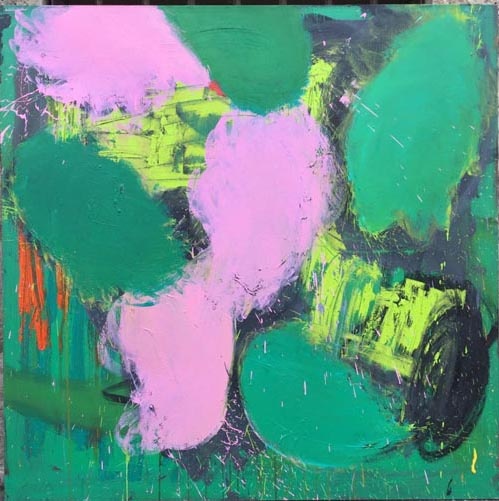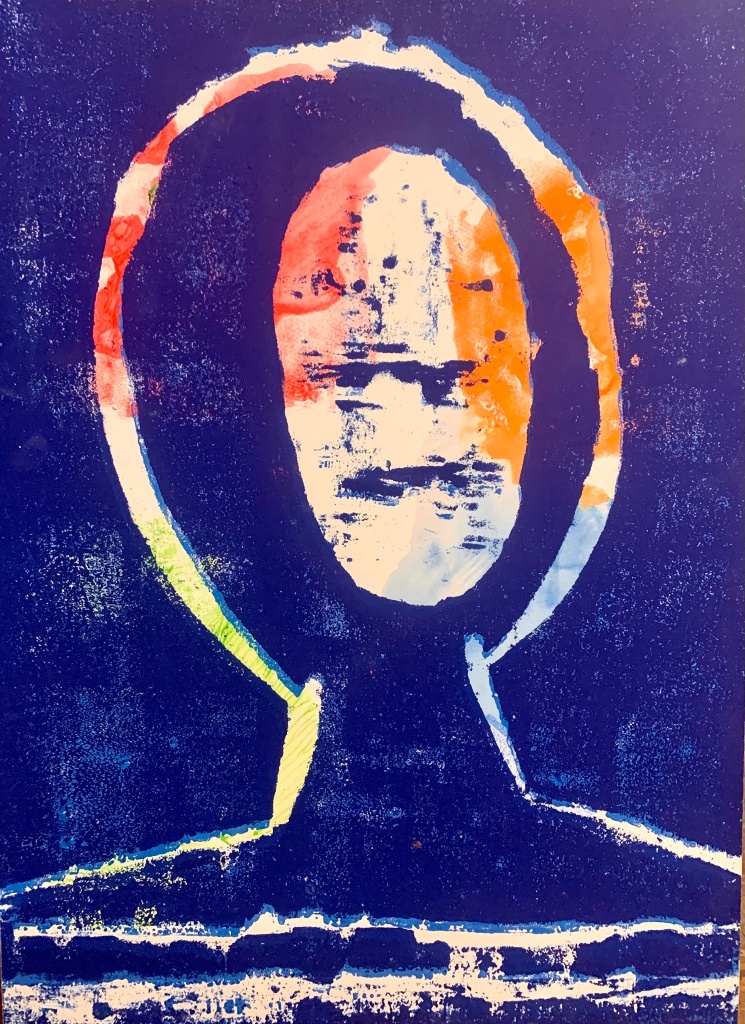Trust in the Strength of Color
Markus Blattmann’s oil paintings, some large in size, often confront the viewer with a number of irregularly shaped colored areas painted with a powerful stroke. Most of them stand opposite each other without any painted transition. These abstract forms are always applied with a coarse brush. Generally indistinct and rarely with clear contours, they relate to one another, appear to coalesce and yet oppose each other. The brushwork is notably firm, at times inspirited. It is striking that the flowing colors are repeatedly painted over each other, layered, blurred, and smeared. Layer for layer, the individual colors overlap, forming structures, revealing a glimpse of that which lies beneath; layered colors enter into complex interactions with each other. The paint is frequently applied thickly in a pastos technique, appealing to the viewer’s sense of touch. Characteristic of Markus Blattmann’s paintings is this joy in the carefree use of color, as he trusts in its elementary impact. The artist was influenced by the Fauves particularly in his use of color, which is neither an attempt to imitate nature nor illusionary mimesis. Rich and pure colors in his paintings assume the character of an autonomous language that engages in a dialogue with itself, free from any formal constraints, and is employed with extraordinary self-assurance. Together with the frottage technique, this forms the artist’s distinctive, individual trademark. The color is not dependent on any object and obliged to nothing but the artist’s imagination. It does not serve the objective characterization or identification of a space, but is expressive color in its own right. What draws into the canvas has more to do with intuitive imagination than with a reflexive representation of the world. A broad palette of tonal values is fostered, from effect to nuance, from gripping hold to tender gesture. These colorful signs are subjective communication by the artist. They are the keys to understanding, or rather to feeling, these paintings; to swinging into the spectrum of color, the perception of frequencies and their sounds, which complement and interfere with each other, and yield charged dissonance. Color is radiant power, energy that influences us in a positive or negative way, whether we are conscious of it or not. The effect of color should be experienced and understood not only visually, but psychologically and symbolically as well. (Johannes Itten). In many of Blattmann’s paintings, these values and intensities of color mutually affect and communicate with each other, and together yield a tremulously charged power field of colored tones. Even where firm points of orientation seem to suggest a concrete space of some type, a consistent perspective is totally absent. Step by step, a complete musical rhythm marked by chords of form and color abandons the illusionist space in favor of an autonomous shape. The trace of the brush is a lasting reference to its origin, reinforcing the immediacy of the evocative gesture from whence it emerged. Nevertheless, the repeated reworking makes the spontaneous, active expressivity appear controlled and precisely dosed as regards its effect. It must harness itself and introduce its strength into the painted whole, which enjoys the highest priority. These paintings are not based on the emotional force of the moment as an expression of inner, mental processes. Despite their apparent expressiveness and gestural brushwork, the paintings are not a manifestation of the sudden venting of their inner tension and movement, like those of the abstract expressionists of the 1950s. They tend more to be components of a conceptual painting process, developed deliberately and continuously. The focal point is not a spontaneous gesture becoming art, but the description of a state, expression of a meditative process of turning inward by means of color. It is art that at first totally excludes the outward appearances of the world and is limited to the inner cosmos of a person and that person’s dreams and subconscious. The viewer’s participation is thus greatly needed. Markus Blattmann’s paintings activate many layers, both on the surface and far below. They are not representational in a narrow sense, create no defined images. Instead, they generate associations, revive memories and emotions, unfold ideas. What Paul Klee once said in a general sense about abstract art is especially valid here: Abstract art does not represent that which is visible, it creates visibility.
Artworks

„o.T.“, 122x122cm, 2015
Markus Blattmann

„o.T.“, 122x122cm, 2015
Markus Blattmann

„o.T.“, 122x122cm, 2015
Markus Blattmann

„BLING Heads brown“, 60x80cm, 2021
Markus Blattmann

„KakaoTalk“, YYxXX, 2021
Markus Blattmann
